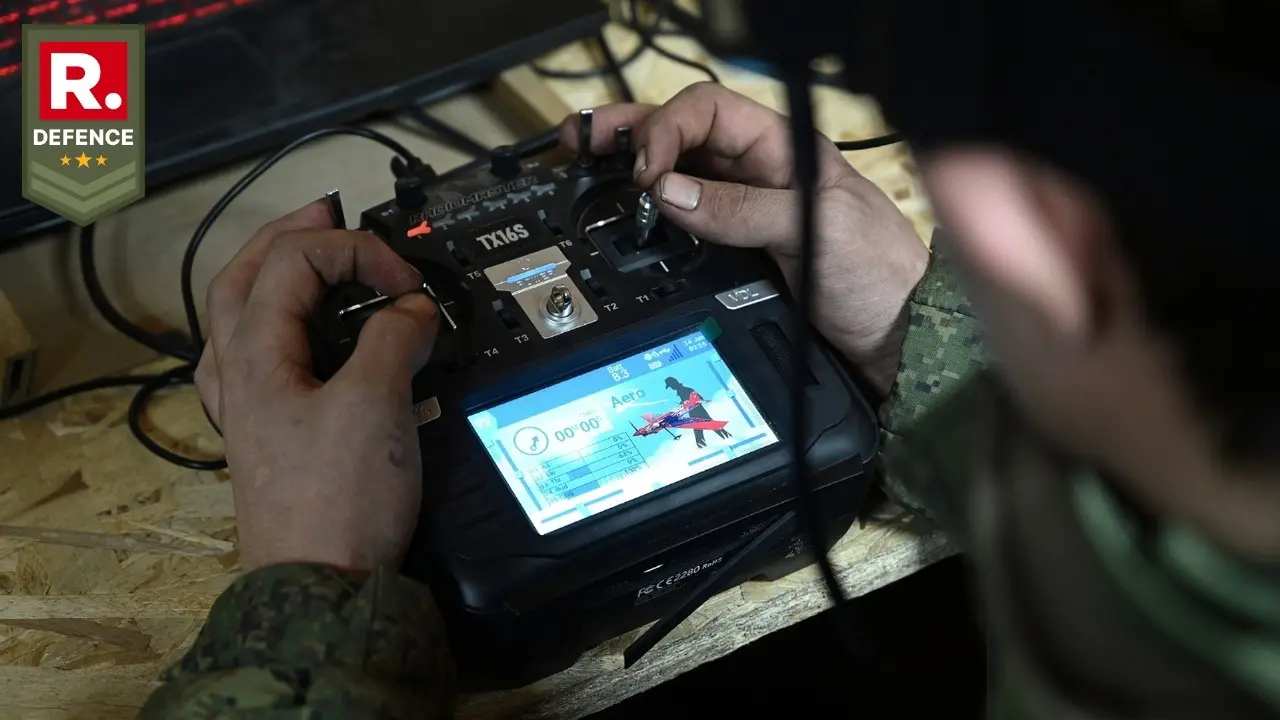Updated 24 April 2025 at 16:37 IST
PLA Launches Information Support Force to Dominate Cyberspace, But Old Faultlines Resurface
On April 19, 2024, China unveiled the People’s Liberation Army’s Information Support Force (ISF) as a futuristic arm of digital warfare.
- Defence News
- 4 min read

Beijing, China - On April 19, 2024, China made a loud announcement. The People’s Liberation Army (PLA) launched its newest military arm—the Information Support Force (ISF)—positioning it as a future-proof engine of digital warfare. Birthed under President Xi Jinping’s ambitious drive to modernize China’s war-fighting capabilities, the ISF was supposed to unify and elevate the country’s cyber, space, and electronic warfare edge. But barely weeks into its existence, the ISF looks less like a masterstroke and more like a Frankenstein creation: disjointed, unstable, and riddled with trust issues.
The ISF was carved out from the now-defunct Strategic Support Force (SSF), which despite a short nine-year stint, was central to China’s cyber-electronic-space triad. Xi’s decision to scrap the SSF and split its assets into three new verticals—the Cyberspace Force, Aerospace Force, and ISF—was meant to sharpen focus. Instead, it’s triggered fragmentation. Reports in The Register and Defence One point to a growing disconnect: the ISF now operates in a silo, with critical space and cyber units functioning separately. What was supposed to be a streamlined engine for joint operations has turned into a maze of conflicting protocols and clunky handovers.
Battlefield Sync Takes A Hit As The Integration Dream Turns Into A Coordination Nightmare
The PLA’s own statements hint at the trouble brewing beneath the surface. In high-level doctrinal briefings, officials have confessed that “systems-level integration”—the backbone of network-centric warfare—remains elusive. In plain speak, different arms of the PLA can’t talk to each other effectively in battle. Interoperability gaps between cyber, command, and field units are limiting response time, intelligence relay, and even basic situational awareness. Without airtight integration, the ISF’s promise of “real-time battlefield superiority” looks like a bold claim without a working circuit.

But technology is only part of the problem. The ISF is entering the field amid a swirl of scandal and purges. Senior SSF officials—including figures close to former Defence Minister Li Shangfu—have disappeared in what analysts believe is a politically motivated anti-corruption sweep. The Jamestown Foundation reports that internal purges have created command voids, leaving operational units without experienced heads. The result? A shaky chain of command, loss of institutional memory, and a climate of deep internal mistrust—all in the very department meant to secure China’s information warfare frontier.
Advertisement
Military Brass Struggle With Adapting To AI and Modern Hybrid Warfare Playbooks
To make up for this leadership vacuum, the PLA has turned to civilian tech experts. On paper, that sounds like a good idea—especially in fields like quantum tech and artificial intelligence. But the reality is messier. Most of these civilian hires aren’t cleared for high-level military ops. They lack field discipline, and many don’t even come from defence backgrounds. That’s a security headache waiting to happen. Worse, PLA traditionalists are reportedly resisting changes to command culture. The ISF’s core AI initiatives—meant to enable faster decision-making and predictive battle modelling—are stuck in limbo because senior officers aren’t ready to cede control to algorithms.

Meanwhile, the tech backbone of the ISF isn’t as future-ready as Xi hopes. The 2023 surveillance balloon fiasco exposed gaping holes in China’s digital warfare toolkit. And the current overhaul hasn’t filled them. Most of the PLA’s data systems are outdated, and integrating them with newer platforms has proven chaotic. The ISF’s training programs are still catching up to the concept of “multi-vector hybrid warfare,” a necessity in any future Indo-Pacific showdown. The dream of dominating the information battlespace is still miles away.
Advertisement
Opaque Command Structure Risks Accidental Escalations In High-tension Theatres
Internationally, the ISF’s arrival hasn’t gone unnoticed—and it hasn’t inspired confidence. According to IISS (May 3 report), security establishments in the U.S., Japan, and India view the ISF as a wild card. Its capabilities—spanning cyberattacks, electronic disruption, and influence operations—are tailor-made for grey zone warfare. However the lack of transparency about its doctrine and scope makes it dangerous. Miscalculations in Taiwan, the South China Sea, or even Ladakh could escalate quickly if adversaries can’t map ISF intent or thresholds. The fear isn’t just what the ISF can do—but what it might do by mistake.

At its core, the ISF was sold as a force multiplier—a sleek, high-tech layer built to wrap China’s traditional might in a digital shroud. But as it stands now, the ISF is less a triumph and more a warning label. It embodies the contradictions of Xi’s military vision: high ambition clashing with ground realities of corruption, opacity, and institutional inertia. For India and others in the region, the lesson is clear—don’t take China’s new warfare toys at face value. The ISF might look intimidating, but behind the circuits and slogans, the wires are far from connected.
Watch - Pahalgam Attack: Chinese Ambassador To New Delhi Gets Fact Checked On 'X' On Pak Terror Outfits
Published By : Yuvraj Tyagi
Published On: 24 April 2025 at 16:37 IST
